IMPORTANT TOURIST DESTINATIONS OF JAMMU AND KASHMIR
1. Pahalgam
"Valley of the Shepherds"
Pahalgam Tourism
Situated in the Anantnag district, about 90km away from Srinagar, Pahalgam is a beautiful hill station and a popular tourist attraction of Jammu & Kashmir. Pahalgam is located on the banks of the Liddar River, and the rugged terrains, green meadows, and snow-capped mountains make it a perfect spot for adventure enthusiasts. Kolahoi Glaciers trek via a beautiful village named Aru is one of the popular trekking regions.
"Heart of Winter Sports in India"
Gulmarg Tourism
Situated at an altitude of 2730 m above sea level, Gulmarg is a popular skiing destination located in Pir Panjal Range of Union territory of Jammu and Kashmir. Surrounded by snow-covered lofty Himalayas, meadows of flowers, deep ravines, evergreen forested valleys, Gulmarg also has the world's second-highest Gondola ride.
Gulmarg is one of the top honeymoon destinations in India. Gulmarg has also been developed as an adventure hub as the Indian Institute of Skiing, and Mountaineering is located here. A lot of courses on trekking, mountaineering, skiing, and snowboarding are offered by IISM. There are a lot of other private tour operators in Gulmarg as well, which provide similar courses and facilities for skiing and snowboarding. Known for its scenic beauty, Gulmarg has also been a popular destination for shooting various Bollywood films.
3.Srinagar
"The Paradise on Earth"
Srinagar Tourism
Famously known as 'Heaven on Earth, Srinagar is located in the union territory of Jammu & Kashmir, on the banks of river Jhelum. Srinagar is known for the stationary houseboats and gondola-type rowboats- Shikaras on Dal Lake. Adorned with tranquil Dal Lake & Nigeen Lake, Srinagar is the dream destination for honeymoon and family holidays.
4.Sonmarg
"The Meadow of Gold"
Sonamarg Tourism
Sonamarg is a picturesque hill station in Jammu and Kashmir, located 80km north-east of Srinagar. At an elevation of around 2,730 metres above sea level, Sonamarg is known for its snow-laden fields, surrounded by majestic glaciers and serene lakes which casts subtle spells on the travellers.
5.Dal Lake
The Jewel of Srinagar, the Dal Lake is synonymous to a visit to Srinagar and is almost a visual definition of the town. Spread over 15 kms, it is the second-largest lake in Jammu & Kashmir. The mirror-like Dal Lake reflects the snow-dusted peaks of the Pir Panjal mountains while the colourful shikaras (gondolas) float around. The houseboats and shikaras are its main attractions.
Considered by some as the best place in Jammu and Kashmir, mostly because of its undisturbed landscape, a less frequented but extremely beautiful hill station, Yusmarg is now connected by a very good motorable road. With the government working on its roads and connectivity, Yusmarg too, will soon become a tourist hub. At the moment, for those who enjoy trekking long distances and in the remotest of area, Yusmarg has forests with maple trees in them. Overall, Yusmarg is a beautiful place and can actually be called a mini hill stationed is a one of the most romantic places in the state.
At a distance of 47 kms from Srinagar, it can also be called Switzerland or at least something close to it. It's the quietest place out of all tourist destinations in Kashmir and is also an amazing trek spot. Trek enthusiasts would definitely love it here! If you want to enjoy some greenery and peace.
Anantnag Tourism
Anantnag is one of the most beautiful cities in the Union Territory of Jammu and Kashmir, with gushing streams and sights and sounds that make Kashmir the heaven that it truly is. Located at a distance of 53 km from Srinagar, Anantnag is regarded as the commercial and financial capital of the Kashmir valley.
It is a large business and trading centre of the valley. Near Anantnag exists the confluence of three streams, Arapath, Brengi and Sandran, and the resulting river is named Veth or Jhelum. There are several larger streams such as Brengi. Another stream Lidder joins the river a little downstream and from that point the river becomes navigable. In olden times river, Jhelum was the main source of transportation between Anantnag and other towns downstream.
8. Aru Valley
Aru Valley, Pahalgam Overview
Aru Valley, situated in the Anantnag district of Jammu and Kashmir is a serene and enchanting tourist attraction located 12 km from Pahalgam. This tranquil hill station is nestled amidst green grasslands with a stunning view of the majestic Himalayan ranges. The valley serves as a base camp for numerous treks. It also provides opportunities for skiing, heli-skiing, horse riding, wildlife and bird watching. Aru Valley's natural beauty and adventure offerings make it an appealing destination for nature lovers and thrill-seekers alike.
At the heart of Aru Valley lies its pristine meadows, misty valleys, and snow-capped mountains, making it an ideal spot for a picnic. This small village serves as the starting point for famous treks like the Sonamarg trek and the trek to Kolahoi Glacier, catering to trekkers of all expertise levels. Moreover, camping and fishing are other popular activities to be enjoyed here. Aru Valley also offers an exhilarating bird's eye view of the stunning landscapes with its paragliding experience. Additionally, the valley boasts enchanting waterfalls and crystal-clear water streams that add to its natural charm.
9.Amarnath
Amarnath Tourism
Amarnath, located in union territory of Jammu and Kashmir is one of the most important pilgrimage in India for the worshippers of Lord Shiva. The Amarnath cave has an enshrined Shivaling formed naturally with ice, which resembles Lord Shiva.
Betaab Valley is one of the most popular tourist attractions in Pahalgam which is a breathtaking combination of picturesque surroundings encircled by tall deodar trees and pine forests, with the Lidder River flowing right through it. The valley is located at a distance of 15 kilometres from Pahalgam in the Anantnag district of Jammu and Kashmir. Betaab Valley got its name from the Bollywood movie Betaab starring Sunny Deol and Amrita Singh shot here.
The valley falls between Pahalgam and Chandanwari on the way to the Amarnath Temple Yatra. It is one of the three angelic valleys of Pahalgam, the other two being Aru and Chandanwari. Sprawling fertile pastures, snow-capped mountains and meandering streams are characteristic of Betaab valley. Apart from being well-known for this stunning landscape, the valley is also a renowned as a famous trekking base and camping site for travellers who want to explore the nearby regions or set out for the Amarnath Yatra.
11.Shankaracharya Temple
The Shankaracharya Temple in Srinagar, located on top of the Shankaracharya Hill, is dedicated to Lord Shiva and is one of the oldest shrines in Kashmir. Also known as Jyesteshwara Temple, the temple is named after the great philosopher Shankaracharya who is believed to have visited Srinagar about ten centuries ago. The Shiva Linga he worshipped is located in the temple.
It is believed that Adi Shankaracharya attained spiritual enlightenment at this place and it was after this enlightenment that he went out and formed the four Hindu schools of Advaita, or the philosophy of non-dualism. The Shankaracharya temple sits on a solid rock and is constructed on a high octagonal platform that is approachable by a flight of around 243 steps. The top of the temple affords a sweeping view of the valley below.
12.Dachigam National Park
Situated 22km from the main town of Srinagar, the national park is India's most elevated forest reserve at an altitude of 1700m to 4300m above sea level and is spread over a sprawling 141 sq kms. Right from the Himalayan grey langur that feeds on the barks of trees to the rare Himalayan brown bear to Pygmy Owlets to the predators, the leopards. You shall not be disappointed one bit because Dachigam is always prepared to show you all of its beauty.
13.Vaishno Devi
"The Holy Caves"
Vaishno Devi Tourism
Vaishno Devi is a temple town that's home to the famous Vaishno Devi Mandir. Located in Trikuta hills, 13 kms from Katra (in the union territory of Jammu and Kashmir); this renowned shrine allures millions of devotees from all over the world. Popularly known as Mata Rani, Vaishnavi and Trikuta, Vaishno Devi is a manifestation of the Hindu Goddess Durga. It is believed that during the pooja and aarti, Goddesses arrive at the Holy cave to pay their respect to Mata Rani. Devotees believe the goddess herself calls the devotees to reach here.
Vaishno Devi is said to be Moonh Maangi Muradein Poori Karne Wali Mata (the mother who fulfils the wishes of her children). The darshan of Maa Vaishno Devi in the holy cave is in the form of three naturally formed rocks which are known as pindies. These pindies manifest the three forms of the goddess as Maha Kali, Maha Sarasvati and Maha Lakshmi. More than one crore devotees visit the Vaishno Devi temple each year.
14 Shalimar Garden
Shalimar Bagh is a Mughal garden in Srinagar, linked through a channel to the northeast of Dal Lake, on its right bank located on the outskirts of Srinagar city in Jammu and Kashmir, India. Its other names are Shalimar Garden, Shalimar Bagh, Farah Baksh and Faiz Baksh, and the other famous shore line garden in the vicinity is Nishat Bagh. The Bagh was built by Mughal Emperor Jahangir for his wife Noor Jahan, in 1619. The Bagh is considered the high point of Mughal horticulture. It is now a public park. This time it’s also called as crown of Srinagar.
History
Emperor Jahangir built his celebrated Shalimar Bagh, his dream project to please his queen. He enlarged the ancient garden in 1619 into a royal garden and called it ‘Farah Baksh’ (‘the delightful’). He built it for his wife Nur Jahan (‘light of the world’). In 1630, under Emperor Shah Jahan’s orders, Zafar Khan the governor of Kashmir extended it. He named it ‘Faiz Baksh’ (‘the bountiful’). It then became a pleasure place for the Pathan and Sikh governors who followed Zafar Khan.
During the rule of Maharaja Ranjit Singh the marble pavilion was the guest house for European visitors. Electrification of the premises was done during Maharaja Hari Singh’s rule. Thus, over the years, the garden was extended and improved by many rulers and called by different names, but the most popular name ‘Shalimar Bagh’ continues to this day.
During the Mughal period in particular, Emperor Jahangir and his wife Nur Jahan were so enamoured of Kashmir that during summer they moved to Srinagar with their full court entourage from Delhi at least 13 times. Shalimar Bagh was their imperial summer residence and the Royal Court. They crossed the arduous snowy passes of the Pir Panjal mountain range on elephants to reach Srinagar
Layout
The layout of the garden is an adaptation of another Islamic garden layout known as the Persian gardens. This garden built on a flat land on a square plan with four radiating arms from a central location as the water source. It needed to be modified to suit the hilly terrain and availability of a well, which could be diverted from a higher elevation to the planned gardens. Modifications involved the main channel running through the garden axially from top to the lowest point. This central channel, known as the Shah Nahar, is the main axis of the garden. It runs through three terraces. This layout left out the radial arms and the shape became rectangular, instead of a square plan of the Chahar Bagh.
The garden, as finally laid out, covers an area of 12.4 hectares (31 acres) built with a size of 587 metres (1,926 ft) length on the main axis channel and with a total width of 251 metres (823 ft). The garden has three terraces fitted with fountains and with chinar (sycamore) tree-lined vistas. The Shahnahar is the main feeder channel to all the terraces. Each one of the three terraces has a specific role.
The garden was linked to the open Dal Lake water through a canal of about 1 mile (1.6 km) length and 12 yards (11 m) in width that ran through swampy quagmire. Willow groves and rice terraces fringed the lake edge. Broad green paths bordered the lake with rows of chinar trees. The garden was laid in trellised walkways lined by avenues of aspen trees planted at 2 feet (0.61 m) interval.
Architecture
The second terrace garden along the axial canal, slightly broader, has two shallow terraces. The Diwan-e-Khas (the Hall of Private Audience), which was accessible only to the noblemen or guests of the court, now derelict, is in its centre. However, the carved stone bases and a fine platform surrounded by fountains are still seen. The royal bathrooms are located on the north-west boundary of this enclosure. The fountain pools of the Diwan-e-Khas, the Diwan-e-Aam, and in turn, the Zenana terrace are supplied in succession. It has 410 fountains.
In the third terrace, the axial water channel flows through the Zenana garden, which is flanked by the Diwan-e-Khas and chinar trees. At the entrance to this terrace, there are two small pavilions or guard rooms (built in Kashmir style on stone plinth) that is the restricted and controlled entry zone of the royal harem. Shahajahan built a baradari of black marble, called the Black Pavilion in the zenana garden. It is encircled by a fountain pool that receives its supply from a higher terrace. A double cascade falls against a low wall carved with small niches (chini khanas), behind the pavilion. Two smaller, secondary water canals lead from the Black Pavilion to a small baradari. Above the third level, two octagonal pavilions define the end wall of the garden. The baradari has a lovely backdrop of the snow mountains, which is considered a befitting setting for the Bagh.
Nishat Bagh is a terraced Mughal garden built on the eastern side of the Dal Lake, close to Srinagar in the UT of Jammu and Kashmir, India. It is the second largest Mughal garden in the Kashmir Valley. The largest in size is the Shalimar Bagh, which is also located on the bank of the Dal Lake. ‘Nishat Bagh’ is Urdu, which means “Garden of Joy,” “Garden of Gladness” and “Garden of Delight.
Located on the bank of the Dal Lake, with the Zabarwan Mountains as its backdrop, Nishat Bagh is a garden of bliss that commands a magnificent view of the lake beneath the snow-capped Pir Panjal mountain range that stands far away to the west of the valley. The Bagh was designed and built in 1633 by Asif Khan, elder brother of Nur Jehan.
An interesting anecdote of jealousy of the Emperor Shah Jahan on beholding such a delightful garden, which almost shutdown the garden for some time, is narrated. When Shah Jahan saw this garden, after its completion in 1633, he expressed great appreciation of its grandeur and beauty. He is believed to have articulated his appreciation three times to Asif Khan, his father-in- law, with the hope that he would gift it to him. As no such offer was made by Asif Khan, Shah Jahan was piqued and ordered closure of the water supply to the garden. Then, for some time, the garden was deserted. Asif Khan was desolate and heartbroken; he was uninterested in the sequence of events. When he was resting under the shade of a tree, in one of the terraces, his servant was bold enough to turn on the water supply source from the Shalimar Bagh. When Asif Khan heard the sound of water and the fountains in action he was startled and immediately order closure of water supply as he feared the worst reaction from the emperor for this wanton act of disobedience. Fortunately for the servant and Asif Khan, Shaha Jahan, who had heard about this incident at the garden, was not disturbed or annoyed by the disobedience of his orders. Instead, he appreciated the servant for loyal service to his master and then ordered full restoration rights for the supply of water to the garden to Asif Khan, his Prime Minister and father-in-law. Mughal Princess Zuhra Begum was buried in the garden she was the daughter of Mughal Emperor Alamgir II, and granddaughter of Emperor Jahandar Shah.
Layout
Even though the layout of Nishat Bagh was based on the basic conceptual model of the Persian gardens, it had to be remodelled to fit the topographic and water source conditions at the site chosen in the Kashmir valley. The plan, instead of being central with four radiating arms in a square pattern as in the case of Chahar (suited for a flat country side), was changed to an axial stream flow design to fit the hill condition with water source originating at the top of the hill end. This resulted in planning a rectangular layout rather than a square layout. This helped in dispensing with the long side arms. Thus, a rectangular layout with east-west length of 548 metres (1,798 ft) and width of338 metres (1,109 ft) was adopted.
Architecture
Thus, Nishat Bagh as laid out now is a broad cascade of terraces lined with avenues of chinar and cypress trees, which starts from the lakeshore and reaches up to an artificial façade at the hill end. Rising from the edge of the Dal Lake, it has twelve 12 terraces representing twelve Zodiacal signs. However, it has only two sections, namely the public garden and the private garden for the Zanana or harem vis-à-vis the four sections of the Shalimar Bagh; this difference is attributed to the fact that the latter Bagh catered to the Mughal Emperor, while Nishad Bagh belonged to a man of his court, a noble. There are, however, some similarities with the Shalimar Bagh, such as the polished stone channel and terraces. The source of water supply to the two gardens is the same. Built in an east-west direction, the top terrace has the Zenana garden while the lowest terrace is connected to the Dal Lake. In recent years, the lowest terrace has merged with the approach road. A spring called the Gopi Thirst provides clear water supply to the gardens. There are a few old Mughal period buildings in the vicinity of the Bagh.
The central canal, which runs through the garden from the top end, is 4 metres (13 ft) wide and has a water depth of 20 centimetres (7.9 in). Water flows down in a cascade from the top to the first terrace at the road level, which could be also approached from the Dal Lake through a shikara ride. The water flow from one terrace to the next is over stepped stone ramps that provide the sparkle to the flow. At all the terraces fountains with pools are provided, along the water channel. At channel crossings, benches are provided for people to sit and enjoy the beauty of the garden and the cascading flows and fountain jets.
16 Chashma Shahi
DirectionChashma Shahi or Chashma i Shahi (translation: the royal spring), also called Chashma Shahi, is one of the Mughal gardens built in 1632 AD around a spring by Ali Mardan Khan, a governor of Mughal emperor Shah Jahan as per the orders of the Emperor, as a gift for his elder son Prince Dara Shikoh. The garden is located in the Zabarwan Range, near Raj Bhawan (Governor‘s house) overlooking Dal Lake in Srinagar, Kashmir.
History
The garden was constructed around the spring by the Mughal Governor Ali Mardan Khan in 1632. It was commissioned by the Mughal emperor Shah Jahan for his eldest son, Dara Shikoh. In the east of Chashma Shahi the Pari Mahal (Fairy Palace) lies where Dara Shikoh used to learn astrology.The garden is 108 m long and 38 m wide and is spread over one acre of land. It is the smallest garden among the three Mughal gardens of Srinagar; the Shalimar garden is the largest and the Nishat garden is the second largest. All the three gardens were built at the right bank of the Dal Lake, with Zabarwan mountains (Zabarwan Range) at the backdrop.
Architecture and the spring
The garden presents Mughal architecture as used in different Mughal gardens. The artistically build garden has Iranian influence in its art and architecture and the design is based on the Persian gardens. It is built around a fresh water spring, which flows through its centre in terraces. The topography and the steepness of the land have led the formation of the garden. The main focus of the garden is the spring which flows down in terraces and is divided into three sections: an aqueduct, waterfall, and fountains. A two-storey Kashmiri hut stands at the first terrace which is the origin of the spring. The water then flows down through a water ramp (chadar) into the second terrace. The second terrace serves as a water pool and a large fountain stands at its centre. The water again flows down through a water ramp into the third terrace, which is a square five-fountain pool. It is the lowest pool at the entrance of the garden. The visitors are received through a flight of stairs on both sides of the terraces which leads up to the origin of the spring. The water of the spring is believed to have some medicinal properties. The former Premier of India, Pandit Jawahar Lal Nehru, used to get the water of the spring to Delhi.
Access
The Chashme Shahi is located within the jurisdiction of Srinagar city, 14 kilometres (9 mi) in the northeast from the Srinagar Airport. It is adjacent to Raj Bhawan (Governor’s house). The garden is connected by the Boulevard Road which passes along the banks of the Dal lake. There are many hotels and restaurants available for boarding and lodging near the garden. The garden remains open for tourists from March to November. The best time to visit the garden is from April to October. The garden is at full bloom during May and June.
17 Pari Mahal
DirectionAround this Verinag Spring, an octagonal stone arcade and basin were laid by Emperor Jehangir to enhance the beauty of this place. Later on, his son Shah Jahan got Mughal Gardens built around it to capture the natural splendors of Verinag. The town of Verinag, thus, became synonymous with this spring and Mughal Gardens built in 1620 AD. Verinag Gardens also earned the distinction as a Monument of National importance as recognized by Archeological Survey of India.
Originally, Verinag spring was a pond of water with an asymmetrical shape. It had water issuing from underneath and forming a marsh. When Emperor Jehangir witnessed the beauty of this spring, he decided to get it redecorated and thus, he initiated the construction of an octagonal stone tank to contain the water of this spring. To build this tank, the carvers were brought from Iran during 15th century. This date of construction was inscribed on a slab that is carved into the south wall of the arch built around this tank.
This health resort lies in the South East of the District at a distance of 25 Kms. A famous spring called “Kokernag” gushes out from the foot of the nearby hill covered with evergreen pine trees. A terraced garden and a Botanical garden with delicately maintained flower beds of different varieties and hues covered and protected with beautifully pruned evergreen shrubs and the existence of lofty and majestic chinars is an enchanting sight to be imbibed. The music of the health giving, refreshing and appetizing running waters of the stream have left little chances of not to be enchanted and mesmerized by this heavenly touch.

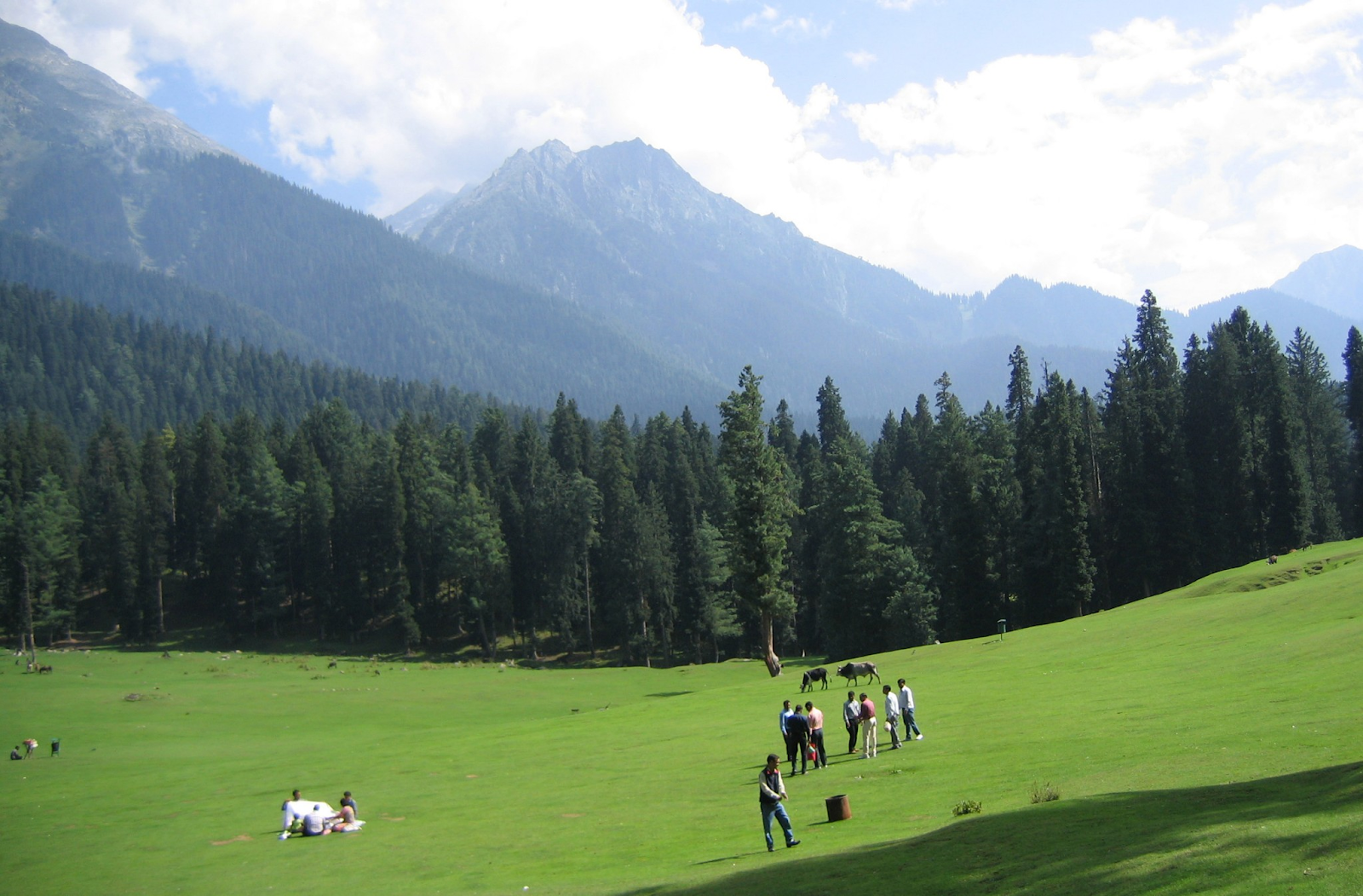

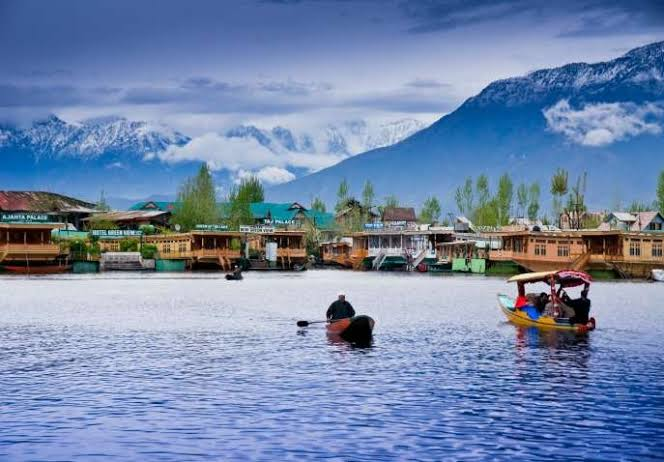

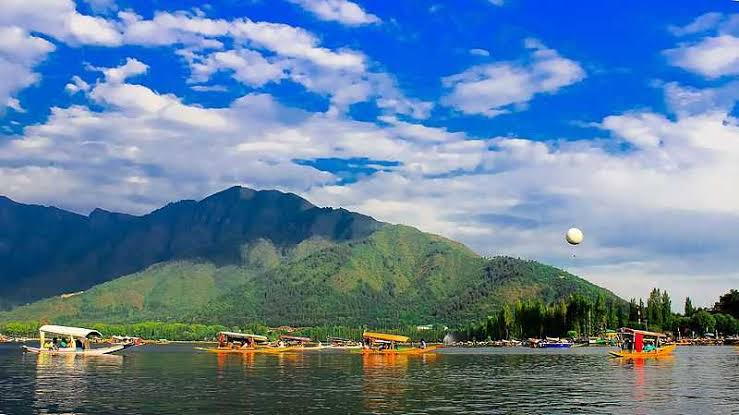
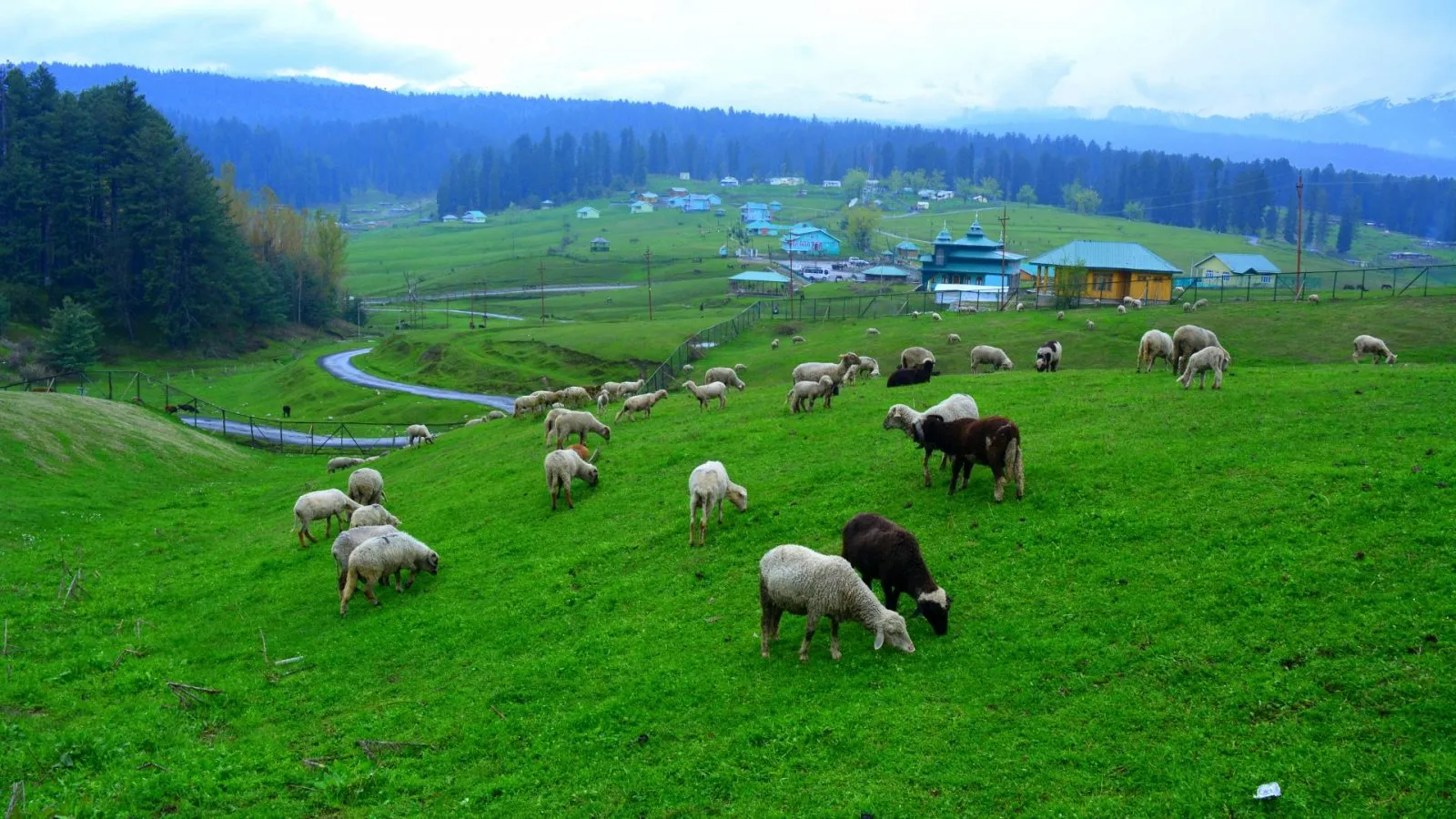

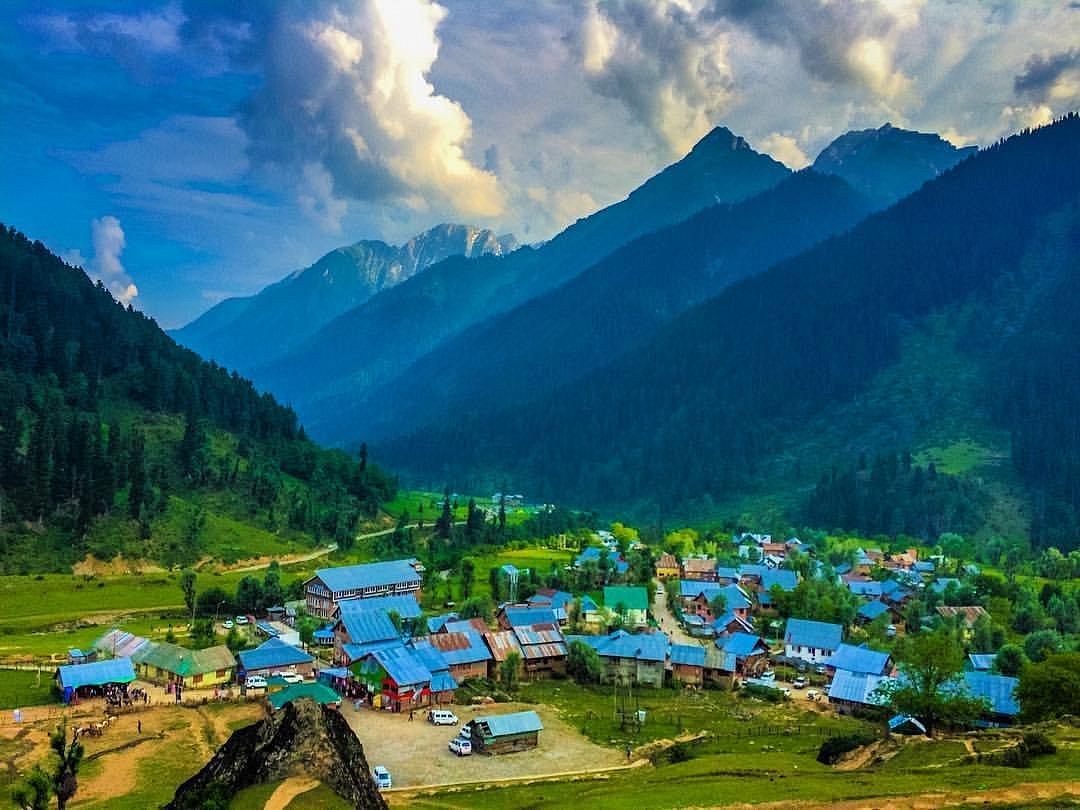











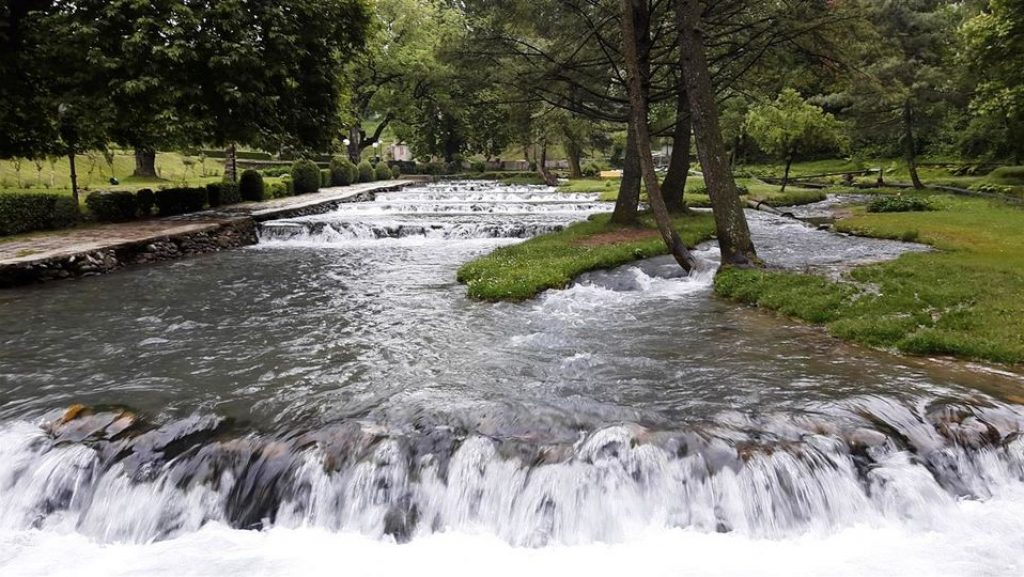



.jpg)

0 Comments